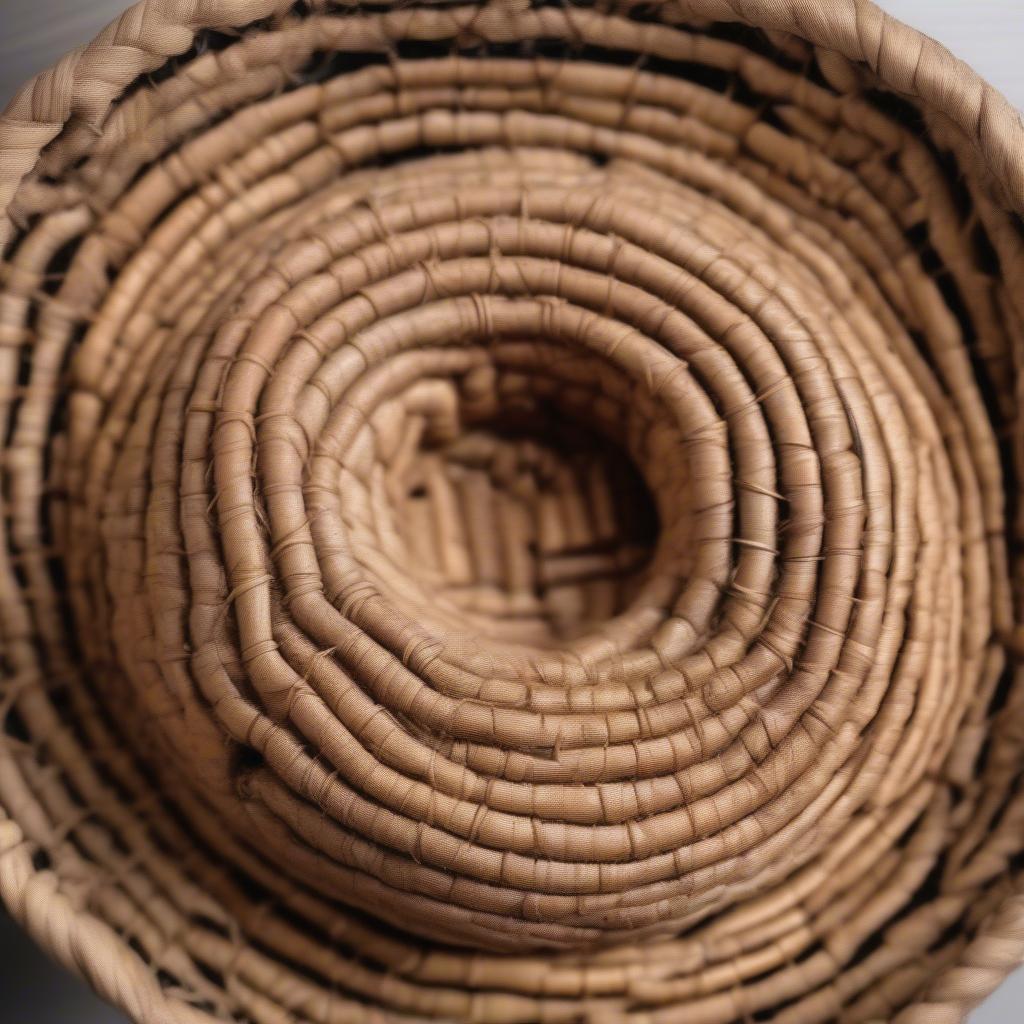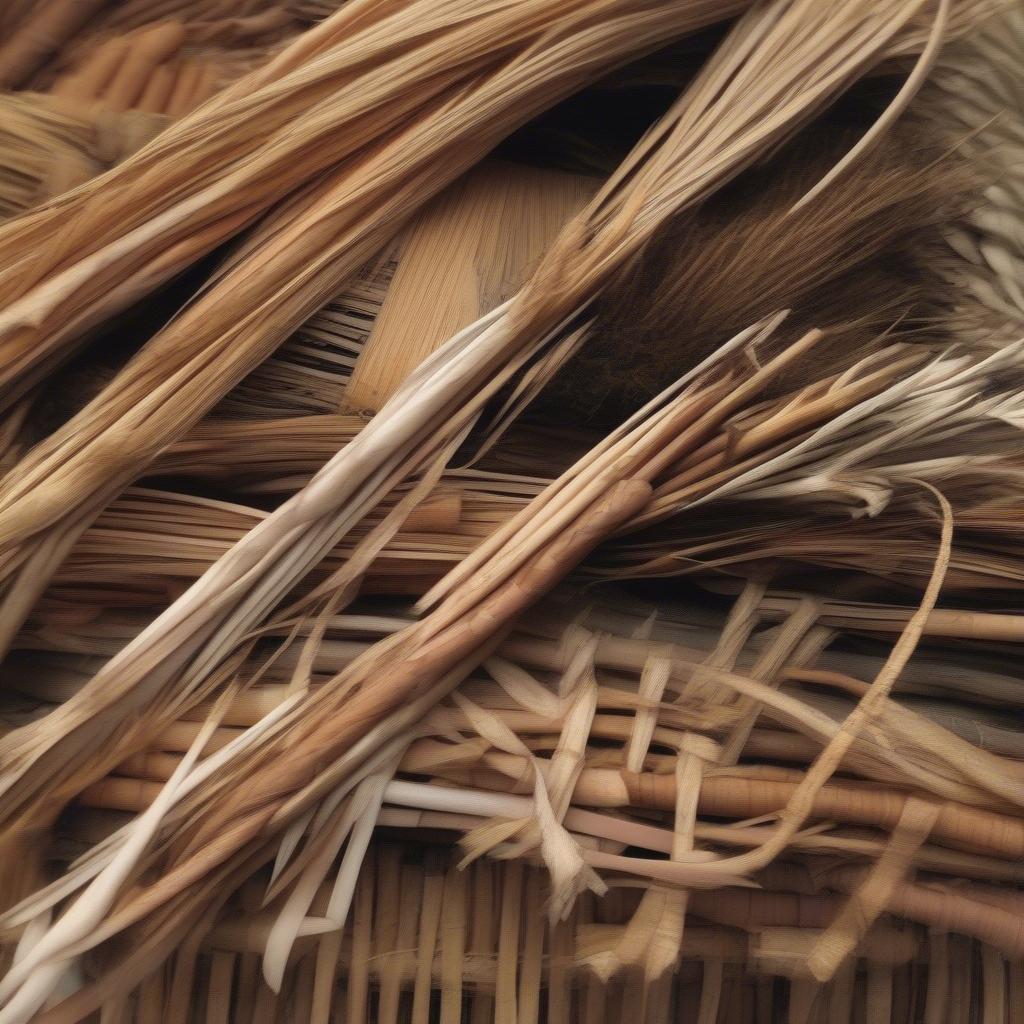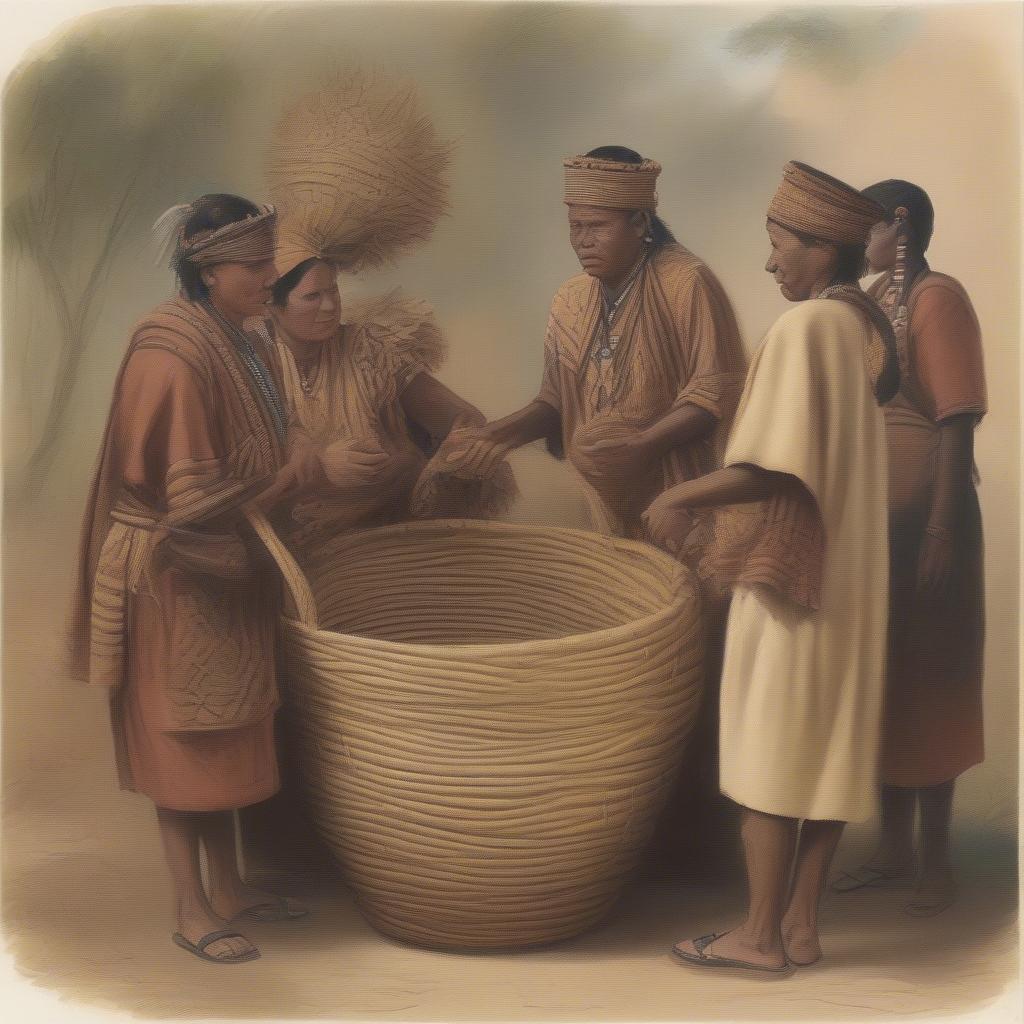Basket Weaving
Exploring Primitive Basket Weaving Styles
Primitive Basket Weaving Styles offer a fascinating glimpse into the resourcefulness and artistry of our ancestors. These techniques, often utilizing readily available natural materials, represent not only a practical craft but also a rich cultural heritage passed down through generations. primitive ivy basket weaving styles are a great example of this historical craft.
The Timeless Appeal of Primitive Basketry
From coiled baskets to twined and plaited forms, primitive basket weaving encompasses a diverse range of techniques, each with its own unique character and purpose. These styles often reflect the specific environment and resources available to the weavers, resulting in a beautiful tapestry of regional variations. What makes these styles so captivating is their inherent simplicity and functionality, a testament to human ingenuity.
What Defines Primitive Basket Weaving?
Primitive basket weaving typically refers to techniques employed before the advent of modern tools and industrialized materials. Natural fibers like grasses, reeds, bark, and vines serve as the primary materials, carefully selected and prepared by hand. The weaving process itself is often slow and deliberate, requiring patience and skill to create durable and aesthetically pleasing baskets. These baskets served vital functions in daily life, used for storage, carrying, and even cooking. primitive phillipine basket weaving styles demonstrate the diversity and skill involved in these traditional methods.
Common Primitive Basket Weaving Techniques
Several key techniques characterize primitive basket weaving styles:
- Coiling: This method involves spiraling a foundation material, often bundles of grass or reeds, and stitching them together with a separate, thinner material. The tightness of the coil and the stitching pattern contribute to the basket’s strength and decorative appearance.
- Twining: In twining, two or more flexible weavers are interlaced around a series of rigid warp elements. This technique allows for greater flexibility in shaping and creating intricate designs.
- Plaiting: Plaiting, similar to braiding, involves interweaving three or more strands in an over-under pattern. This creates a flat, sturdy surface, ideal for mats and shallow baskets.
 Example of a Coiled Primitive Basket
Example of a Coiled Primitive Basket
Materials Used in Primitive Basketry
The choice of materials in primitive basket weaving is often dictated by the local environment. Commonly used materials include:
- Willow: Known for its flexibility and strength, willow is a popular choice for basket weaving worldwide.
- Reeds: These tall grasses offer a sturdy structure for basket making, particularly for coiled baskets.
- Bark: Tree bark, especially from birch and cedar trees, can be stripped, processed, and woven into durable and water-resistant baskets.
- Ivy: how to weave a foraging basket using ivy highlights another fantastic natural fiber available.
 Reed and Bark Basket Materials
Reed and Bark Basket Materials
“The beauty of primitive basket weaving lies in its connection to nature,” says renowned ethnobotanist Dr. Anya Sharma. “Each basket tells a story, not only of the weaver’s skill but also of the land that provided the materials.”
The Cultural Significance of Primitive Baskets
Primitive basket weaving often holds deep cultural significance, representing a connection to ancestral traditions and beliefs. Baskets can be imbued with symbolic meaning, used in ceremonies, or passed down as heirlooms. philippine basket weaving has a rich history filled with both practical and symbolic significance. For example, certain patterns or materials might signify social status, clan affiliation, or spiritual beliefs. Understanding the cultural context of primitive basketry adds another layer of appreciation for these remarkable crafts.
 Primitive Basket in a Cultural Ceremony
Primitive Basket in a Cultural Ceremony
“Primitive basketry is more than just a craft,” adds Dr. Sharma. “It’s a living testament to the ingenuity and artistic expression of cultures around the world.”
Conclusion
Primitive basket weaving styles offer a captivating window into the past, showcasing the ingenuity and creativity of our ancestors. From the simple elegance of coiled baskets to the intricate patterns of twined and plaited forms, these techniques continue to inspire and fascinate. By appreciating the materials, techniques, and cultural significance of primitive basketry, we gain a deeper understanding of our shared human heritage. Consider adding a basket weave design bed spread to your home for a touch of this beautiful craft.
FAQ
- What are the most common primitive basket weaving styles?
- What materials are typically used in primitive basket weaving?
- How long does it take to weave a primitive basket?
- What is the cultural significance of primitive basket weaving?
- Where can I learn more about primitive basket weaving techniques?
- What are some examples of contemporary artists who practice primitive basket weaving?
- How can I identify authentic primitive baskets?
Need assistance? Contact us at Hanoi, Vietnam or Tech Avenue, Suite 12, San Francisco, CA 94105, USA. We have a 24/7 customer support team.
